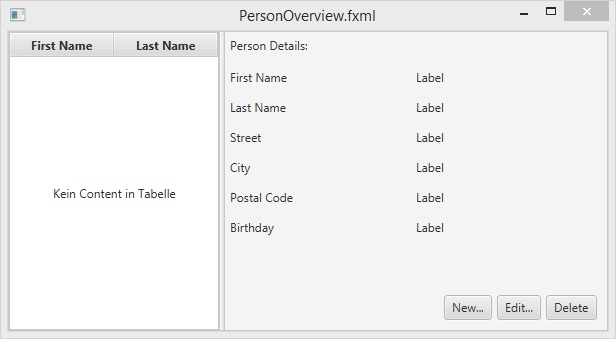

Select the TableView and choose constrainted-resize for the 'Column Resize Policy'.The TableView should resize together with the window as it is anchoredĬhange the column text (under Properties) to "First Name" and "Last Name". Go to the menu Preview → Show Preview in Window to see whether the layout configuration is done correctly. Inside an AnchorPane you can always set anchors to the four borders (see this page for more information on Layouts). Select the TableView (not a Column) and set the following layout constraints in the Inspector to the Drag a TableView (under Controls in Library view) into the left side of the SplitPane.Right-click the Split Pane in the Hierarchy view and select Fit to Parent. Add a Split Pane (Horizontal Flow) (under Containers) by dragging it from the Library into the main area.Select the Anchor Pane in your Hierarchy, and adjust the size under Layout (right side).
#Buttonbar not in scene builder install
If IntelliJ prompts for a location of the SceneBuilder executable, make sure to point to where you install SceneBuilder. Now you should see the Scene Builder with just an AnchorPane (visible under Hierarchy on the left). Right-click on PersonOverview.fxml and choose Open with Scene Builder. For the file name, type PersonOverview.fxml. Right click on the view package, and press New → FXML file. That means we will not have to directly work with XML. Furthermore, we are able to use the Scene Builder tool to edit our FXML file. We will use FXML for most parts, so that we can separate the view and controller from each other.


Ensure that your Project pane is open ( Alt+ 1). In We will create a package for each of the component. We will manually create our own package and resources in our tutorial. Remove the sample package and its content. If prompted to create a new directory, just press OK. AddressApp), and specify a suitable location. Make sure that the Project SDK is set to 1.8 and JavaFX Application is selected. If you already have a project, you can create a new project by going File → New → Project.On the Welcome screen, press Create New Project.The JavaDocs will come in handy when writing your own JavaFX applications:Īdditionally, Oracle also has a tutorial on JavaFX if you are interested. C:\Users\Admin\AppData\Local\SceneBuilder\SceneBuilder.exe on Windows) Under Path to SceneBuilder:, select the path to where SceneBuilder is installed (e.g.

#Buttonbar not in scene builder how to
This tutorial will teach you how to create a new JavaFX application in IntelliJ, and to use the SceneBuilder to create a layouts for your application. JavaFx 8 Tutorial - Part 1: Scene Builder Introduction


 0 kommentar(er)
0 kommentar(er)
